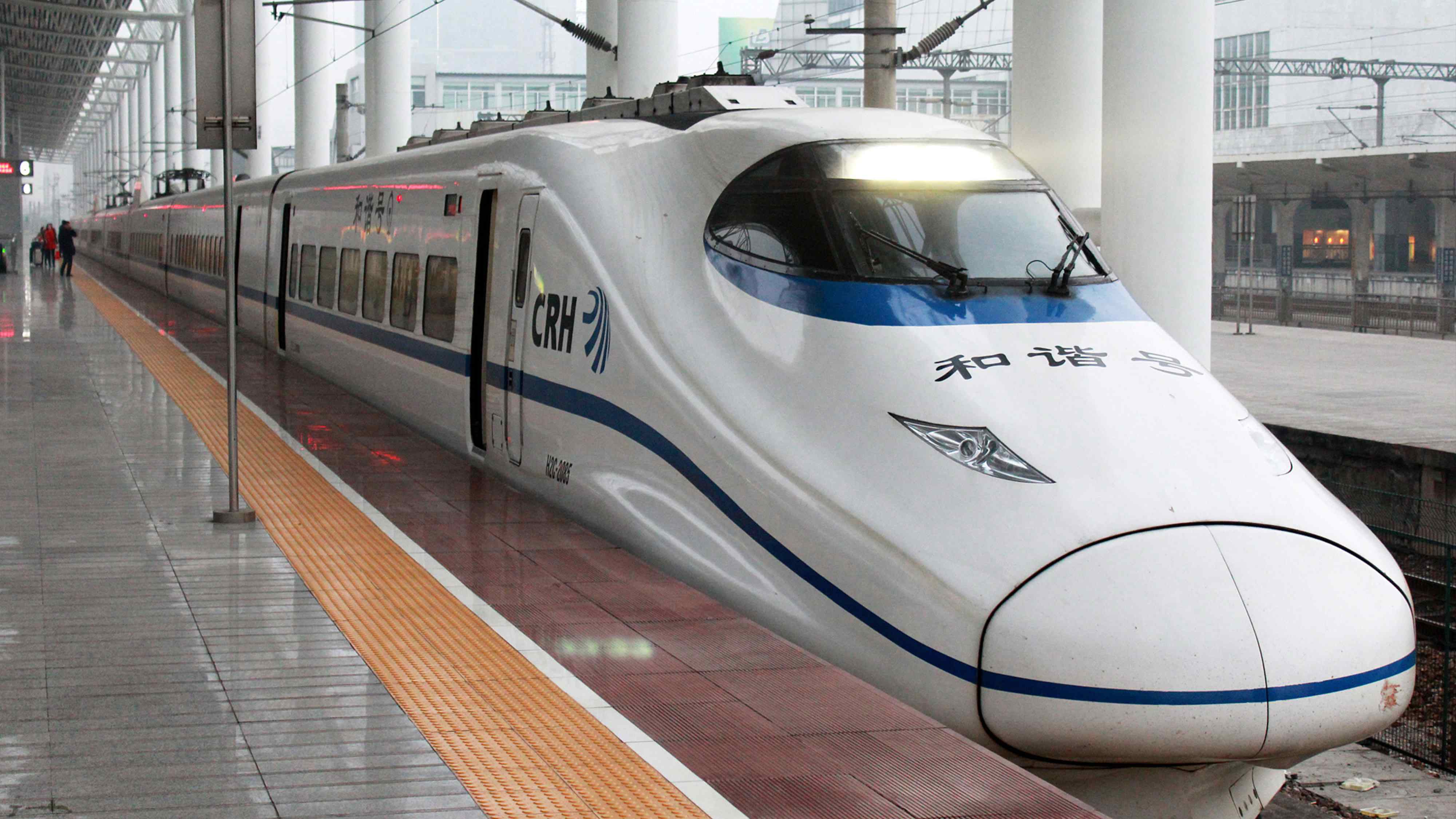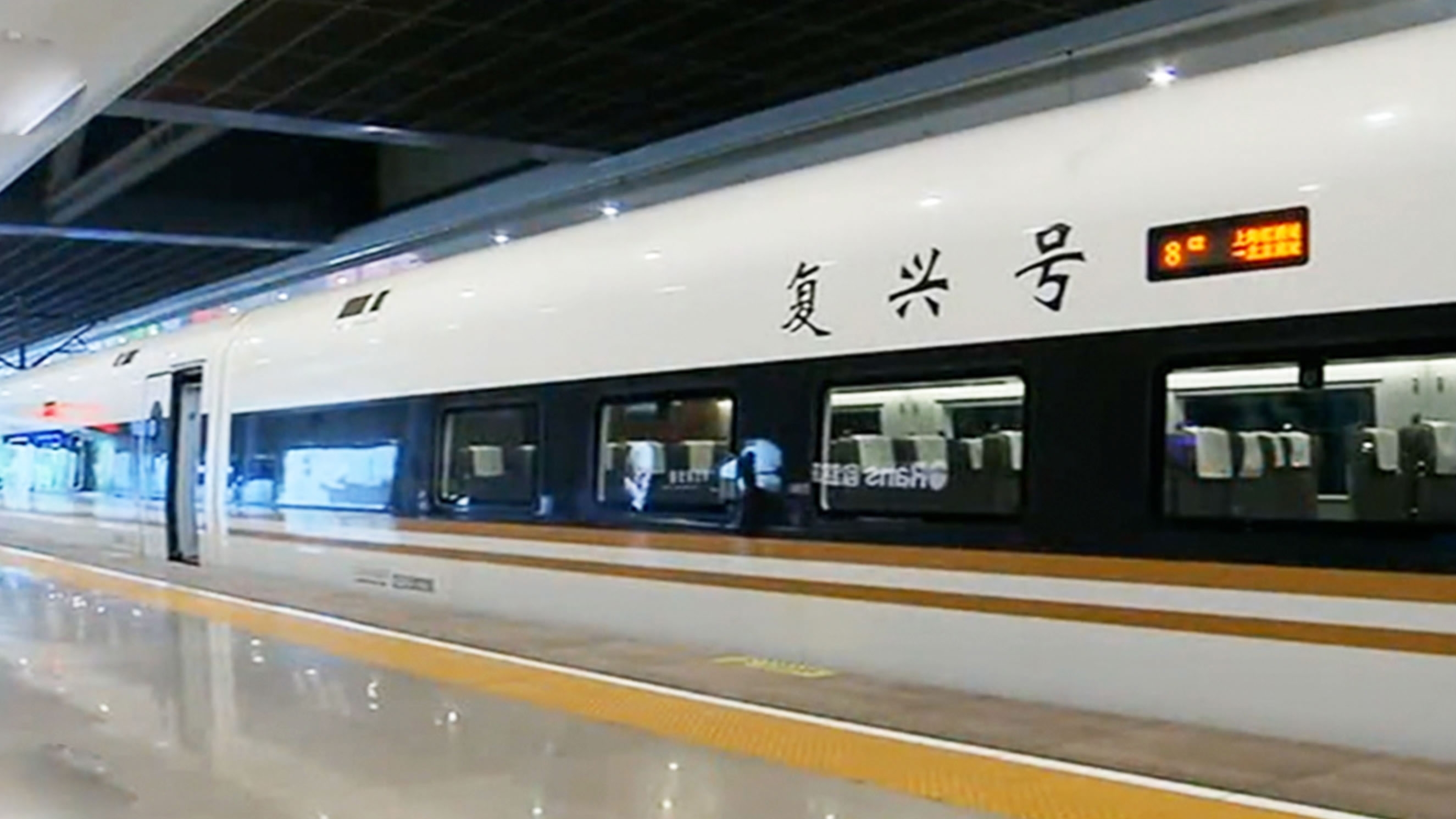
Tech & Sci
15:18, 06-Mar-2018
Migrant workers grab chances brought by railway-developed urbanization
By Zhao Yunfei, Zhou Weigang

China's high-speed railways have allowed people to cut the time spent traveling between cities down to just a few hours.
In one extreme case, the train ride between Beijing and Tianjin’s Wuqing district is often shorter than taking a cab across the capital city from east to west. Therefore, some people are choosing to work in Beijing.
Yin Meng, an engineer who works in Beijing, is one of the 300 commuters.
“Wuqing can be seen as the best solution, a solution for us migrant workers in Beijing. It’s hard to get permanent residence in Beijing. The house prices there are high,” Yin said.
There is even a social media group created especially for this community, and Zeng Fanzhou is the owner of the group.
“An efficient transportation system is supposed to provide us with enough space to control our own lives,” said Zeng. “But it is easy for commuters to fall into a routine, especially during their first year.”
Zeng often pushes himself to think outside the box and make full use of his time. As a father, he wants to become a role model for his two children, and offer them a better life.
Since 2008, China builds high-speed railway between Beijing and Tianjin. The infrastructure upgrade links the two municipalities in just about 30 minutes.
Lei Tao was the first generation commuters. He said working in a neighboring city isn’t an ideal option. If he had the same opportunities in Wuqing as in Beijing, life would be easier.
“Beijing has swallowed up so many resources. It may cause some problems for the city,” said Lei. “If those resources were distributed around the surrounding areas, both Beijing and the surroundings would benefit.”
Lei’s wife Wang Runxia was born and raised in Tianjin. She said Wuqing has been developing quickly since the high-speed railway was built.
“Many things show that we are becoming a bigger city,” said Wang. “I think there are many changes in terms of infrastructure, people’s ways of thinking and living.”
Lei’s family is eager to reach the next phase, an era where it's no longer necessary to travel away from home for a better job.

Beijing has always been at the receiving end of development in northern China. Its neighbor Tianjin is relatively less developed. The Beijing-Tianjin high-speed railway quickly expanded internal consumer demand in the two cities: Beijing's first-half GDP in 2009 (the second year since the high-speed rail service began) reached 10.1 percent, while Tianjin's reached 16.6 percent.
"The Beijing-Tianjin High-Speed Railway effectively merges the two cities, providing convenient conditions for the exchange of commerce and trade between Beijing and Tianjin," said Yan Hexiang, director general of Science-Technique & Law Department in National Railway Administration.
Infrastructure development has become a tool to shorten the gap between China's major and smaller cities. China began building its first high-speed passenger rail network in 2007 and has continued to expand it rapidly.
Over 25,000 kilometers of railways are already in service as of this year, making China's high-speed network the world's largest.
The high-speed railway network is significantly impacting labor productivity, jobs, industrial growth and regional development.
Take the Beijing-Shanghai High-Speed Railway for example, the initial construction investment was about 60 billion yuan (about 9.5 billion US dollars). The large-scale investment created demand for more than two million tons of steel products, 12 million tons of cement, and another 600,000 jobs in the cities along the railway.
"The high-speed railway network has largely improved the integration of neighboring cities, especially in the major economic zones," said Liu Debing, a professor from University of International Business and Economics.
The new railway network not only improves connectivity between major cities, but also between third- and fourth-tier cities across China.
What's known as the "Four Vertical and Four Horizontal" high-speed railway network has mostly completed by late last year. It brings north and south, east and west much closer together.
According to the National Development and Reform Commission, an "Eight Vertical and Eight Horizontal" network will almost double the route length. By 2020, the total length of China's high-speed railways will reach 30,000 kilometers.
A Chinese proverb says if you want to be rich, build roads first. Using roads and rail to grow the national economy is a strategy that has worked for China. It's no surprise, then, that the country’s blueprint calls for more, and fast.

SITEMAP
Copyright © 2018 CGTN. Beijing ICP prepared NO.16065310-3
Copyright © 2018 CGTN. Beijing ICP prepared NO.16065310-3